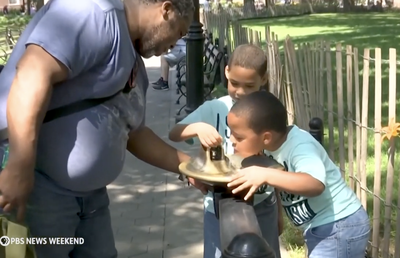For a Google doc version of this lesson, click here. You will be prompted to make a copy.
Overview
This lesson will teach students to evaluate AI tools by examining their purpose, reliability, privacy policies and credibility. Students will also brainstorm their own ideas for AI tools.
Grade level
6-12
Estimated time
50-minutes
Materials
You can find a supplemental vocabulary list here.
Objectives
Students will be able to:
- analyze AI tools using simple evaluation criteria.
- recognize generative A.I. generated misinformation.
- have the ability to discuss why fact-checking matters.
- brainstorm and design their own AI tool idea, taking into account ethics, data use and purpose.
Warm-up activity
As a class, discuss the following:
- Do you recall a time when you have seen a generative AI tool described as “game-changing” or “revolutionary”? What did you think of the claim?
- How can you learn if an AI tool is reliable? How do you know if it is useful?
Main activity
View the video "Push the limits, imagine more." Pause at 04:03 and do the activity on screen:
- Brainstorm your own AI tool idea. Think about:
- What problem does it solve?
- Who would use it?
- What data would it need?
- How would you make sure it's ethical?
Debrief
- Ask students to form small groups and share their ideas for AI tools.
- Have each group votes on the best idea and prepare a short (30-60 second) pitch to present the best idea to the class.
- The pitch must include:
- Tool name
- What problem it solves
- Who the target audience is
- How it works
- Ethical precautions
- After all pitches are shared, the class votes on their favorite.
- While voting, the class should consider ethical protections and creativity of the tool.
Standards
Reading Informational Text
CCSS.ELA-Literacy.RI.6.1, RI.6.2, RI.6.4;
RI.7.1, RI.7.2, RI.7.4;
RI.8.1, RI.8.2, RI.8.4;
RI.9-10.1, RI.9-10.2, RI.9-10.4;
RI.11-12.1, RI.11-12.2, RI.11-12.4
Writing
CCSS.ELA-Literacy.W.6.1b, W.6.2d, W.6.7;
W.7.1a-e, W.7.2a-b, W.7.7;
W.8.1a-c, W.8.2a-c, W.8.7;
W.9-10.1a-d, W.9-10.2a-d, W.9-10.7;
W.11-12.1a-c, W.11-12.2a-d
Speaking and Listening
CCSS.ELA-Literacy.SL.6.1a-d, SL.6.4;
SL.7.1a-d, SL.7.4;
SL.8.1b-d, SL.8.4;
SL.9-10.1a-d, SL.9-10.4;
SL.11-12.1b-d, SL.11-12.4
SL.6.5, SL.7.5, SL.8.5, SL.9-10.5, SL.11-12.5
Language
CCSS.ELA-Literacy.L.6.4, L.6.6;
L.7.4, L.7.6;
L.8.4, L.8.6;
L.9-10.4, L.9-10.6;
L.11-12.4, L.11-12.6
ISTE Standards for Students
ISTE 1.2 Digital Citizen
ISTE 1.3 Knowledge Construct
These videos and lessons were developed by the Poynter Institute’s MediaWise and the Teen Fact-Checking Network in partnership with PBS News Student Reporting Labs. This partnership has been made possible through our collaboration with the Patrick J. McGovern Foundation.
Fill out this form to share your thoughts on Classroom’s resources.




